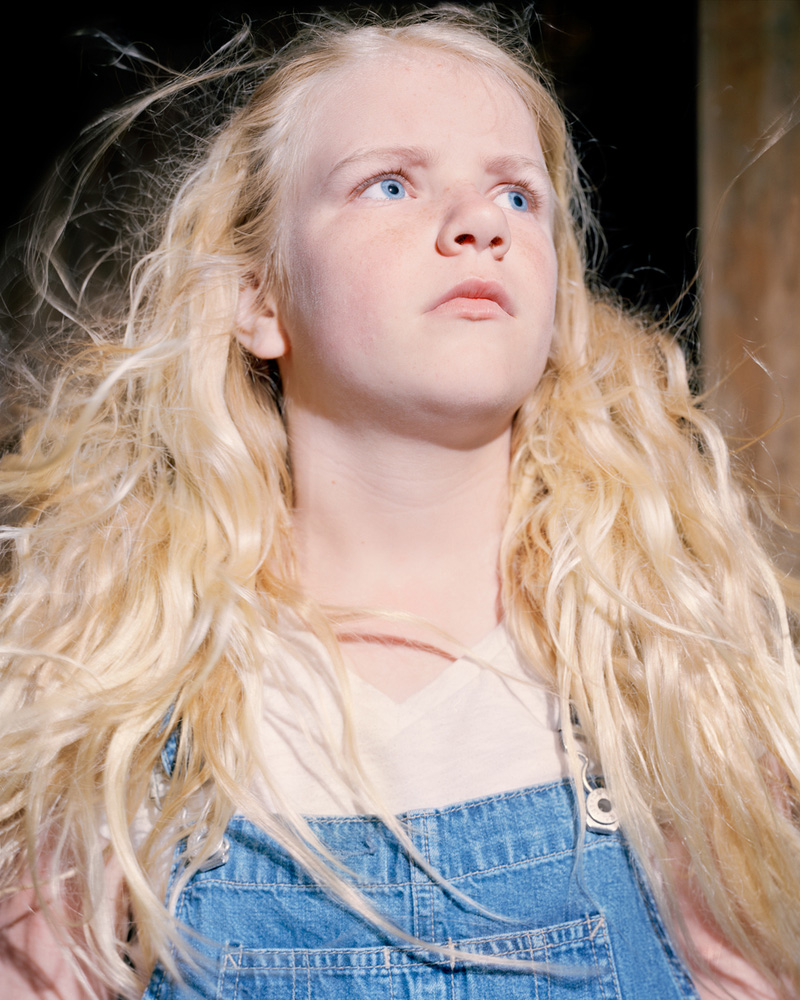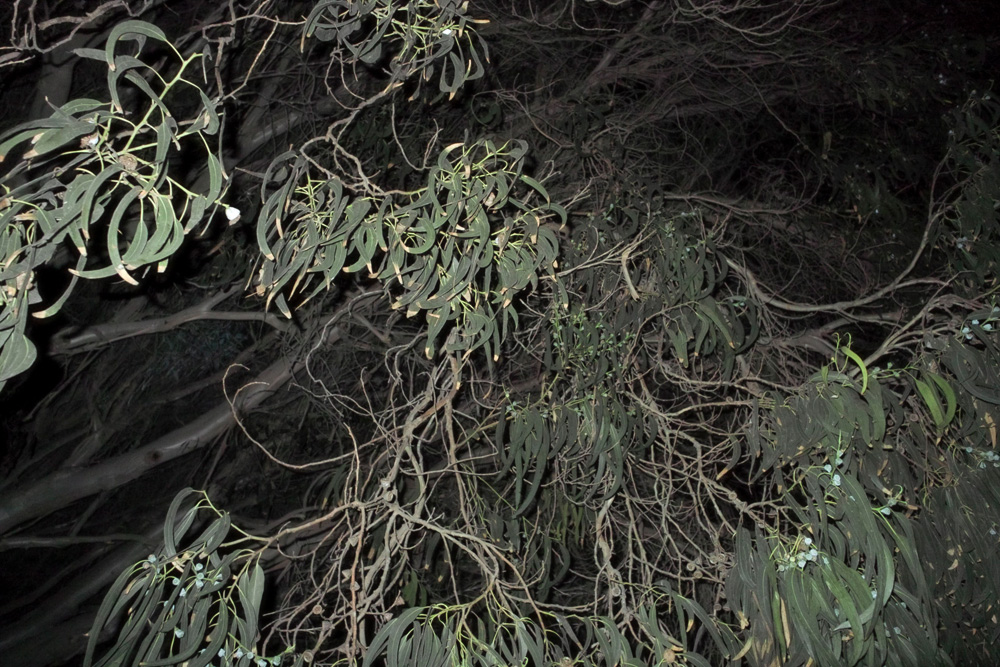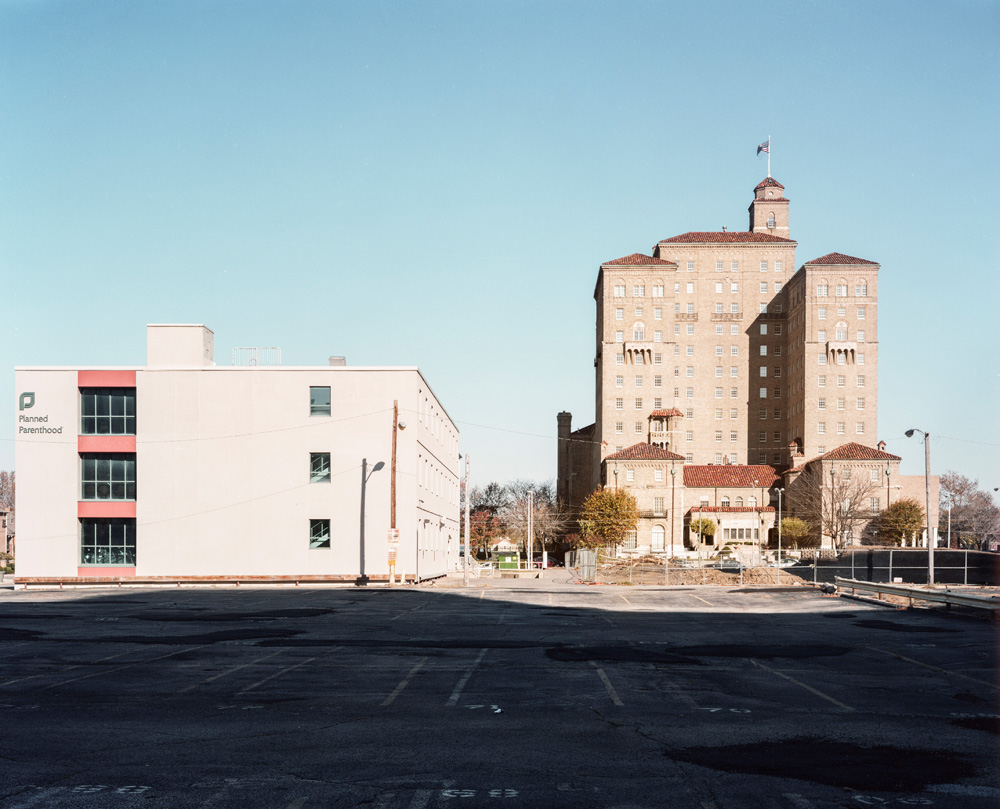radial survey
Silver Eye Center for Photography
4808 Penn Avenue
Pittsburgh, PA 15224
April 4 – May 25, 2019
Symposium: May 24-25, 2019
Essay by Leo Hsu
Issue 121
I’m very pleased to share with Fraction readers a look at Silver Eye Center for Photography’s inaugural Radial Survey a new photography biennial that highlights the work of exceptional photographic artists working within a 300 mile radius of Pittsburgh, PA. The curatorial team led by Silver Eye’s Executive Director David Oresick did not base the selection of the twelve artists in the exhibition around a theme. However, on examination it’s clear that certain ideas and concerns run through all of this work, resonating with our own anxieties and hopes in this divided and troubled historical moment. It’s with this question in mind – how to run some threads around and through the work of these twelve artists, that I wrote the exhibition essay for the Radial Survey, which you can read below.
If you come through Pittsburgh this Spring, I encourage you to visit Silver Eye and see the show for yourself, the first edition of what will become a key regular program in contemporary photography.
The Destiny of a Place
Within 300 miles of Pittsburgh: a large section of the Mid-Atlantic seaboard, the near Midwest, and upstate New York; much of Appalachia; land along three of the Great Lakes. Here are cities and towns that grew with burgeoning American industry between the mid 19th and mid 20th centuries, and that were forced to reckon with globalization in the 1970s. The region is firmly part of a larger social and political ecology. The gravity of New York, especially as a cultural nexus, is felt here, as are the effects of national events and conversations that shape both the region and the course of the country as a whole. But the region is also, in many ways, a place unto itself; within the area of this 300 mile radius we feel, each day, our own destinies becoming further entwined with the destiny of this place.
Nydia Blas, from the series The Girls Who Spun Gold. © Nydia Blas
While Silver Eye’s Radial Survey brings together outstanding emerging and mid-career photo-based artists living and working within a 300-mile radius of Pittsburgh, the artists were not selected on the basis of a designated theme. The twelve artists in the inaugural Radial Survey live across this broad area and operate on their own trajectories with their own motivations, practices, and concerns. Radial Survey is conceived not to identify a regional style or movement, but as a proposition: that working in this space encourages artists to engage with logics, flows, histories, and mythologies that differ from those defining the faster-moving densities of very large cities, and to ask how this (admittedly large) area can be addressed as a place in and of itself.
And yet, despite the absence of a theme, shared sensibilities and concerns do emerge, when considering the work of Nando Alvarez-Perez, Morgan Ashcom, Nydia Blas, Melissa Catanese, Brendan George Ko, Jacob Koestler, Eva O’Leary, Lydia Panas, Ahndraya Parlato, Jared Thorne, Corine Vermeulen, and Susan Worsham.
Nando Alvarez-Perez, Seer and Seen are One. © Nando Alvarez-Perez
Throughout the work of these artists there is a persistent engagement with the relationship between history and possibility. Each artist’s works grapples with the distance between what was and what could be, who we could be, how we could be. These artists examine the overlaps of memory, mythology, and power. They look at place as it is experienced by inhabitants, both as it is lived and as it is desired, and explore the ways that these tensions create the conditions for possibility and agency.
To unpack this: Our ability to invent ourselves is always in relation to histories—personal, political, social—that we have inherited. Departing from the narratives we have received requires an act of imagination powerful enough to break molds and to turn away from set paths. The artists in the Radial Survey invoke the magical, the mystical, and the surreal; they draw attention to the circumstance and materiality of what is; they recognize the limits and illusions of rationality and modern order; they inhabit the sincere belief that we can make our worlds on our own terms, or at least that we must recognize the difference between what we are given and what we want and need.
Claiming possibility requires effort. For better and for worse the past determines our values in the present, both the ones we want and the ones we don’t. In order to hold the past and claim the present, we must live within mythologies even as we attempt to remake them.
***
Several artists in the Radial Survey engage with possibility by exploring the relationship between visualization, identity, and the recognition of power. As a political act, an act of representation can make visible what the artist or subject believes to be possible, or allow for a subject to be seen on their own terms. It can also be raised as criticism, drawing attention to power relations that have become so embedded and normalized as to be difficult to perceive.
In The Girls Who Spun Gold Nydia Blas creates portraits of young Black women who Blas came to know through her role as director of the Southside Community Center in Ithaca. These portraits describe a “physical and allegorical space presented through a Black feminine lens” where her collaborators express their strength and vulnerability on their own terms as they support one another. In Blas’ photographs we witness frozen moments in narratives that we do not know. Gold dust and honey suggest an elemental connection between the subjects and their world.
Lydia Panas, from the series Sleeping Beauty. © Lydia Panas
Similarly, Lydia Panas’ draws attention to the subjectivity of the young women who she photographs in Kutztown, PA. In Sleeping Beauty women lie in the grass, each looking directly back at the viewer, self-possessed. The subjects in Promise Land are photographed in studio to speak to the contradictory expectations and double standards imposed on women. The girls insist on being seen as themselves, even as they wear paper crowns or have lipstick smeared across their face.
Eva O’Leary’s work also explores how social roles, especially gender roles, are shaped by social expectations. Her series Happy Valley deals with growing up and living in State College, PA, home of Penn State University, and describes a sunlit, oppressive delirium. Women reveal the masks that they wear, while men revel in their masculinity and power. With the gloss of advertising photography, O’Leary suggests that this social structure is both deeply embedded and focused on the superficial, and that what seems normal in Happy Valley quickly reveals a quiet, sustained psychological violence that touches everyone.
Eva O'Leary, from the series Happy Valley. © Eva O’Leary
Nando Alvarez-Perez’s Memorex Narcissus and the Angel of History, is a dizzying, symbol-rich mashup of found and constructed imagery that draws attention to the way in which mediated representations are inherently distortive. The keystone image in the piece is a photograph of an oil pastel drawing on an inkjet print of an iPhone photo of a magic lantern slide of a Roman Replica of a lost Greek sculpture of wrestlers. Through these transformations Buffalo-based Alvarez-Perez notes with humor and wit that historical narratives are passed on as iterative constructions, and not according to any essential form.
Melissa Catanese’s Apsis also brings together imagery both found and created by the artist. Apsis, named for the two extreme points of an elliptical orbit—points at which a satellite is closest and farthest from the body around which it orbits—was made in response to the work of filmmaker David Lynch, whose work uses multiple complementary and overlapping narratives to question the notion of a single privileged reality. In her collage Catanese, who is based in Pittsburgh, brings together images and symbols—a closed eye, a fingerprint, a gold curtain—that in the context of new combinations destabilize easy readings and suggest previously unknown mysteries.
Melissa Catanese, from APSIS. © Melissa Catanese
Ahndraya Parlato, from the series Who Was Changed and Who Was Dead. © Ahndraya Parlato
In Who Was Changed and Who Was Dead, Ahndraya Parlato, who lives in Rochester, NY, attempts to reconcile and recover her own narrative. Her mother’s suicide and grandmother’s murder, followed by becoming a mother herself, led to Parlato’s awareness of her own mortality. Parlato’s project deals with her love for her young daughter in the face of grief and fear. The fear of erasure informs this work: Parlato’s “Hidden Mother” portrait follows a Victorian child portraiture convention in which a mother would hold her child while shrouded in cloth, rendering herself invisible; in Parlato’s photograph, there is only a shrouded mother and no child. Parlato renders her own mother visible in the colorful photograms made by exposing photographic paper on which she placed her mother’s ashes.
Susan Worsham’s Bittersweet on Bostwick Lane also reconciles grief by actively engaging with it. Worsham links past and present through the figure of Margaret Daniel, Worsham’s oldest neighbor from her childhood in Richmond, VA, and the last person to see her brother Russell alive before he committed suicide. “My memories become intertwined with hers as I rediscover my past through her stories,“ writes Worsham. Margaret is both the photographer’s subject and her guide. Through conversations with Margaret, Worsham learns about her own family history which she materializes through symbol-rich photography in bittersweet form. Wortham’s other primary subject is her muse Lynn, whose son Max could be read as standing for Russell. The series is full of references to biology and botanicals; a found box of specimen slides speaks to beauty and preservation.
Susan Worsham, from the series Bittersweet on Bostwick Lane. © Susan Worsham
Morgan Ashcom, from the series What the Living Carry. © Morgan Ashcom
Morgan Ashcom in What the Living Carry similarly conjures a place with which he is intimately familiar, though in this case the town of Hoy’s Fork is fictional, created by Ashcom through photographs and artifacts, a distillation of his memories of growing up in Free Union, VA. Hoy’s Fork is the center of its own world; Ashcom describes a community with a strong attachment to the land, with a suggestion of violence, and a sense of a past weighing heavily on the present, even as time has stopped. The figures in the images could be characters in a folktale told repeatedly, their recycling narratives fixing them in slow, inevitable tragedies.
Corine Vermeulen and Jared Thorne chart out ways of visualizing place in a way that inform future possibilities. Their subjects, however, are not defined by their individual histories, but by shared experiences.
In Your Town Tomorrow, Corine Vermeulen presents Detroit as a place that continues to unroll its own history. A genre of imagery popularly known as “ruin porn” that romanticizes the decay of once-grand buildings has emerged around post-industrial cities generally and Detroit in particular. In contrast, Vermeulen presents communities of people living their lives. Her photographs revelin the specific and sometimes the surreal. Her subjects, like the subjects of Panas and Blas’s photographs, look back at the viewer to assert their being, acknowledging each one’s unique circumstances.
Corine Vermeulen, from the series Your Town Tomorrow. © Corine Vermeulen
Jared Thorne, from the series 26 Planned Parenthoods. © Jared Thorne
Jared Thorne’s series 26 Planned Parenthoods, like Lee Friedlander’s American Monuments, highlights the relationship between politics and social landscapes. Thorne draws attention to the ordinariness of the forgettable landscapes surrounding each of Ohio’s Planned Parenthood Health Centers: industrial areas, residential streets, and strip malls, with their parking lots, rusting utility poles, and skeins of power lines. The clinics are not always obvious. Some cannot be discerned in the photographs at all. Thorne’s series connects the political contests around Planned Parenthood with their everyday role in their communities as health service providers. “Planned Parenthood,” writes Thorne, “is at the forefront of providing Women’s healthcare services to underprivileged and the disadvantaged, who in Ohio are disproportionately African-American and Latino.”
Where Vermeulen’s and Thorne’s projects draw attention to how life is lived, Jacob Koestler materializes history as seen in the transformation of post-industrial terrain as it is returned to nature. Koestler, based in Cleveland, focuses on the aesthetic experience of the transformation, not on the corruption of what had been built and is now in decay. Koestler invites us to experience the beauty of these places as he sees them: whether photographing a fence or a massive fallen railroad bridge, he visualizes a relationship between human constructions and the relentless, inevitable overgrowth that reclaims these spaces—not as a competition but as a new synthesis.
Jacob Koestler, from the series Interruptor, © Jacob Koestler
Brendan George Ko, from Scrapbook. © Brendan George Ko
In contrast to Koestler’s embrace of post-industrial terrain, but also with a resonant attention to the implacable power of nature, Brendan George Ko looks to Lake Ontario to find a connection with the land and its presence. His relationship to the land stems from his youth in New Mexico and his time in Hawai’i, where he lives when not in Toronto. Ko’s work allows him to be where he is in order to be where he is not. His photographs on Toronto Island in Lake Ontario are part of his larger ongoing Scrapbook project in which he photographs people and places significant to him, and through which he honors the beauty that he finds in his relationship with nature, and the pleasure of experiencing the vastness of landscapes and seascapes, sunlight and night.
This respect for a natural state mirrors the desire to be, simply, ourselves: who we are, where we are. Whether because of it or in spite of it, all of the artists position themselves in relation to something larger, and then assert their desire to write their own conditions, for the present and for the future. The stakes are high; while the work in the Radial Survey is rich in beauty and compelling imagery that invites us as viewers to escape, these pieces share the sense that the world must be remade if we are to survive: remade with respect to nature, with respect to history, with respect to our own traumas, and with respect to one another.
In 2019, what was once unimaginable has become normalized, from the pleasures and corruptions of a networked world, to a political ecology powered by divisiveness and the advancement of “truths” through the control of information, to unprecedented opportunities to assert identities, even as bigotry, hate, and fear take on public faces in ways that we haven’t seen before. All of this simmers and combusts in the shadow of the global crisis of the anthropocene, the acknowledgment of human responsibility for geologic-scale global transformation. This is the context for the work in the Radial Survey; this is the precarious world that informs the artists’ lives: every individual history connects to the larger human experience and to the specific uncertainties and possibilities of today.
The destiny of a place is subject to change. By visualizing who we are, where we are, the artists of the first Radial Survey encourage us to take ownership of these destinies.
Leo Hsu
Radial Survey is curated and organized by David Oresick, Kate Kelley, Leo Hsu, Ross Mantle, Elana Schlenker, and Sean Stewart.
Leo Hsu is a regular contributor to Fraction Magazine based in Pittsburgh, PA. See leo-hsu.com or find him on Instagram @hsuleol













